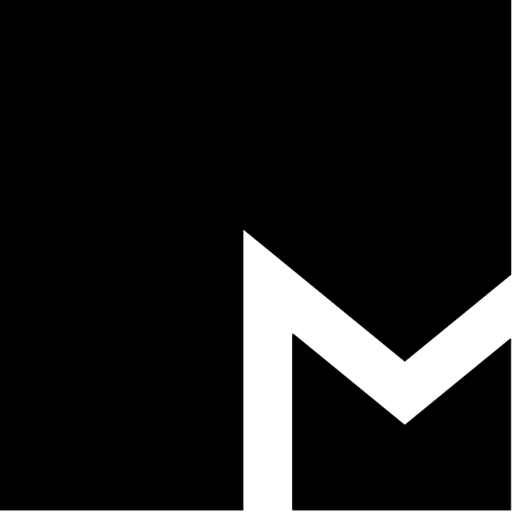WHAT ART MEANS TODAY
‘What Art Means Today’ was the first Malevich Symposium. It took place in July 2019 and marked the commencement of a series of Malevich Launch events planned throughout this year. World renowned curators, museum directors, artists, academics and specialists in technological fields gathered to reflect on the future of the art world. We explored questions of tangible and intangible art, cultural heritage in private art collections, new ideas of generosity as well as the possibilities offered by virtual reality and the benefits of a new digital age. The Symposium took place at 180 The Strand and also debuted a new work by Ed Fornieles from his Finiliar series.
EVOLUTION OF RESPONSIBILITY
moderated by Hans Ulrich Obrist
Our society is maturing from a careless adolescent into a more responsible, generous entity; concerned by issues such as ecology, sustainability and the care we take of the most vulnerable elements of our society. Our morality is shifting, evolving from values centred on personal success to a world focused on inclusivity, equality and generosity. How can the art world evolve to match, accommodate and nurture these changing socioeconomic attitudes and structures? Will it modernise to become more egalitarian? What is its mission and responsibility? What will be the role of institutions, gallerists, artists, collectors and audiences? How can we use new models to share cultural experiences on a wider scale?
Hans-Ulrich Obrist on Marshall McLuhan’s idea of artists as an ‘early alarm system’ for coming changes: “Every company, every corporation, every government, all structures should always have an artist in residence, and even more so an artist on the board. So whoever of you has a company or a governmental structure or an institution, you know, put an artist on the board. Artists are there, they’re an early alarm system, it’s very urgent to listen to artists!”
Svetlana Marich on the new Malevich creative ecosystem: “Today I think everything changes in the way that we become more communal, and more collectively oriented. We can see it in different activities of society like ecology or gender politics, it’s already been very successfully proceeded, but in the art world not yet. And this is what we are helping to make now, to build this ecosystem which allows us to be generous in a collective effort to realise something exponentially which would never happen if we would act individually”.
Johann König on Malevich eco-friendly non-shipping concept: “These technologies will offer us alternatives which will have an impact on efficiency and also – to turn the question around, what do we really need to ship around the world?
EMERGING TRENDS
moderated by Daniel Birnbaum
How are visions of the future shaping current art trends? What role do intangible artworks play in our lives and what changes do they bring? How do these trends influence the re-evaluation of our daily life experiences: family relations, work and leisure and attitudes to financial and natural resources?
Ed Fornieles on mapping new technologies: “In fact the one VR thing that I have done was a pornographic VR where you’re constantly having sex with various people and your body and the other person’s body is changing every 20 seconds outside of your control from race to age to body type”.
Ben Vickers on technology, industrial scale reforestation and conceptions of time: “They want to plant a billion trees at a time using drones. And I think what’s important is what is that vision of the world, and what does it run up against? Because I think that it’s important to also pay attention to the other systems that are emerging, and the other systems that are gaining voice, and just because that system uses technology doesn’t necessarily mean that it’s new”.
Svetlana Marich and Daniel Birnbaum on embryo stage of virtual reality. Svetlana: “I think Virtual Reality is an amazing tool, but we are in the stage when, let’s say, the medium of photography would be created, and we would show each other any photography just saying “this is a great art – it doesn’t matter what’s on it.” Daniel: “When the new strong technical possibility, a new medium, basically, appears, there is always a window of confusion and misunderstandings and exaggerations. When photography appeared we didn’t know if it was occult science or science, or will it kill painting – and there were all these ideas. And we’re in that window of confusion [now], but maybe, you know, an interesting window of experimentalism also”
THE NEW DIGITAL AGES
moderated by Ben Vickers
How are new technologies affecting the production of artworks and their exchange? Developments like blockchain point towards an art world with improved transparency, democratic engagement and ecological impact. Do they also open up new ways of thinking about how individuals, private and public entities can collaborate to pursue new art models?
Lucia Pietroiusti on cultural communication of information: “Sumerian poetry, what it is when you read it, these marriages between gods and goddesses and what have you are actually sort of information about human pollination of the date palm... which holds up the entirety of Sumerian Culture”
Jeremy Shaw on the limitations of virtual reality: “For me, the problem with VR is that it gives the viewer too much autonomy. And that’s something I don’t want… I work with these outmoded forms, a 16 mil, with VHS etc, only to then rupture into digital later. But if someone puts on a headset, they’re ready for it, you know, and therefore the level of subversion goes way down”
Konrad Rotthege on the emerging benefits of public art as profitable financial investments: "I believe that in the art world the use of technology will open up this field even further by creating new possibilities of revenue streams for artists, funding models, of sharing models [and] will increase the possibilities for people and for artists to share their art and make it more accessible… So Malevich is actually the best example for this separation of ownership and enjoyment of art, because the platform allows you to own a [whole] piece while it is actually accessible to a wider public, and travelling around galleries, museums, different sort of shows"
FINILIAR
Finiliar is a playful reimagining of the indecipherable and often times unruly beast that is the stock market. Transforming it from an abstract creature of facts and figures to the disarmingly cute Finiliar; a living embodiment of the ups and downs of the global economy, expressing market fluctuations through its emotions. Taking information from an ever-fluctuating market and converting it to a grinning, happy dance of joy or a hungover, crying vomit of sorrow. Commissioned by Malevich as both real-world sculpture and digital talisman connected to real data, the piece is a truly unique expression of the meeting point of art and finance. It would be easy to see Finiliar as a simple reduction of real-world quandaries to a pop culture symbol, a SPEAKERS Pokémon-esque mascot cheering or commiserating the real-world consequences of boom and bust. This, however, would be to miss the point entirely. At its heart Finiliar bridges the divide between the stock market and they layman’s understanding of it in an undeniably fun and creative manner. It offers a point of understanding like no other, giving an immediate visual understanding to any and all that might wish to see it.
Daniel Birnbaum is director of London’s Acute Art, a laboratory exploring art and technology. He is professor of philosophy at the Städelschule in Frankfurt and the author of numerous books on art and philosophy. He has been a member of the board of directors of Frankfurt’s Institut für Sozialforschung as well as of Nobel Media, which organizes all events and productions surrounding the Nobel prizes. Between 2010 and 2018 he was director of Moderna Museet in Stockholm. He was the curator of the 1st Moscow Biennial (2005), Airs de Paris (with Christine Macel) at the Centre Pompidou (2007), the 2nd Yokohama Triennial (2008), 50 Moons of Saturn in Torino (2008), and Zero (with Tijs Visser) at Martin Gropius Bau (2015). In 2009 he was director of the 53rd Venice Biennial. From 2000 to 2010 he was the rector of the Städelschule and director of its Portikus gallery.

Ed Fornieles is an artist working in London. His most recent project “Cel” uses immersive role play to investigate the effects of hierarchical structures and how the psychology of extremist views feed off each other and negatively impact the world in which we live. Fornieles’ work focuses on exploring alternative tools and patterns of behaviour through role play. He has exhibited at The Serpentine Gallery, Chisenhale Gallery, Martin Gropius Bau, amongst various other institutions and galleries.

Johann König is a dealer and gallerist. König founded König Galerie in Berlin in 2002 while still in school, and has since become a driving force in the contemporary art world. König Galerie now represents 39 international artists working in a wide range of disciplines. The gallery program’s focus is on interdisciplinary, concept-oriented and space-based approaches in a variety of media including sculpture, video, sound, painting, printmaking, photography and performance. In 2011, together with his artist Helen Marten, König organised the solo-exhibition “Take a stick and make it sharp” which at the time was widely considered to be the best exhibition project by an emerging gallery, the achievement won him FIAC’s Prix Lafayette. König has successfully placed works in a variety of private and public collections, including the Museum of Modern Art in New York and the Guggenheim Foundation. The gallery participates in international art fairs such as Art Basel, Frieze Art Fair, London, FIAC, Paris and Art Basel Miami Beach.

In 2008 during her semester studies at Sorbonne University, Paris, she worked on “China, Forward!” exhibition at Albert Benamou Gallery, Paris, which was exhibited in Moscow TSUM Foundation May - June 2008. Same year she was appointed as a director of the art foundation. Soon after Marich joined Phillips as a head of Phillips auction house in Russia. Marich worked on the third Moscow Biennale of Contemporary Art, curated by Jean Hubert Martin (2009) and the fourth Biennale with Peter Weibel (2011).
In 2014 Marich moved to London to become deputy chairman at Phillips auction house, and worldwide Deputy Chairman in 2016, a position which she held until 2023. Concurrently, Marich curated and produced exhibitions. Her projects include Zaha Hadid’s retrospective in 2015 and Anselm Kiefer’s solo show “For Velimir Khlebnikov” in 2017, both at the State Hermitage Museum in St Petersburg; Evgeniy Antufiev’s exhibition “When art became part of the landscape,” Part II at the Sergei Konenkov Memorial Studio-Museum and Part III at the Multimedia Art Museum Moscow In 2018 (Innovation Prize nomination; winner of Kandinsky Prize for the best project of the year), followed by Antufiev’s special project for Manifesta 12 in Palermo.
In 2018, she founded Malevich.io, a platform to support artists by producing artworks and exhibitions in collaboration with galleries, museums and private collectors. Malevich.io has produced shows in collaboration with Goldsmiths CCA, London, Ca’ Pesaro International Gallery of Modern Art, Venice, Centre Pompidou, Paris; Serpentine Galleries, London and others. In 2023, Malevich.io established an art advisory offshoot focusing on building art collections for private museums and institutions. In 2024, Marich launched PHOTONIA, an art and film production company.

Hans Ulrich Obrist is Artistic Director of the Serpentine Galleries in London, and Senior Artistic Advisor of The Shed in New York. Prior to this, he was the Curator of the Musée d’Art Moderne de la Ville de Paris. Since his first show “World Soup” (The Kitchen Show) in 1991, he has curated more than 300 shows. Obrist’s recent publications include Mondialité, Somewhere Totally Else, Ways of Curating, The Age of Earthquakes with Douglas Coupland and Shumon Basar, and Lives of The Artists, Lives of The Architects.

Lucia Pietroiusti is is Curator of General Ecology at the Serpentine Galleries (London) as well as the Curator of Sun & Sea (Marina) by Rugile Barzdziukaite, Vaiva Grainyte and Lina Lapelyte, the Lithuanian Pavilion at the 58th Venice Biennale, 2019. She is the curator (with Filipa Ramos) of the durational festival on interspecies consciousness, "The Shape of a Circle in the Mind of a Fish" (2018-ongoing); and the co-curator (with Kay Watson) and co-presenter (with Victoria Sin) of The Serpentine Podcast. Pietroiusti is currently researching more-than-humanism, ecology, interspecies consciousness, species extinction, plant intelligence, botany, eco-matriarchy and myth.

Dr. Konrad Rotthege, is a corporate finance lawyer and author. He studied law and economics at the London School of Economics and the University of Hamburg, Germany. Konrad is based in London where he advises investors on cross border M&A transactions. He is truly passionate about art and history.

Jeremy Shaw’s artistic practice is characterised by a complex use of effects and narrative devices in relation to perceptions of reality and expressions of ideology in contemporary art, film and popular media. His practice explores the potential of catharsis to simultaneously represents and effect states of mind, perception, ecstasy, belief, religious fervour, escapist fantasies, and extremes of subjective experience as formulated in sub- and countercultures that have changed the Western political landscape since the 1960’s. Through a precise management of the expectations of film, Shaw’s works directly challenge normative forms of subjectivity in cultural production. Shaw works in a variety of media to explore altered states and the cultural and scientific practices that aspire to map transcendental experience. His films, sculptures and installations have been exhibited extensively, including solo shows at MoMA PS1 (US), Schinkel Pavillon (DE), and MOCA (CA), and featured in group exhibitions such as the 57th Venice Biennale (IT), Manifesta 11 (CH), Stedelijk Museum (NL), and Palais de Tokyo (FR). In 2018, he was awarded a residency at the Hammer Museum (US) and was the winner of the 2016 Sobey Art Award (CA). Works by Shaw are held in numerous public collections worldwide including the Museum of Modern Art, NY, Centre Pompidou, FR and Tate Modern, UK. In 2020, Jeremy Shaw will have a solo exhibition at the Centre Pompidou (FR) which will premiere his new film as an immersive audiovisual installation.

Ben Vickers is a curator, writer, publisher, explorer, network analyst, technologist and luddite. He is currently CTO of the Serpentine Galleries in London. Vickers is co-founder of Ignota Books and an initiator of the open-source monastic order unMonastery and, a new kind of social space designed to serve the local communities of towns or small cities throughout Europe in solving key social and infrastructural problems.


